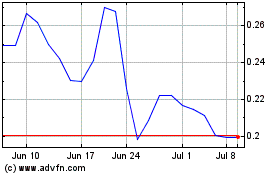Marshall Edwards, Inc., Names Second Study Site in Multi-National Ovarian Cancer Trial of Investigational Anti-Cancer Drug Pheno
June 14 2004 - 10:45AM
PR Newswire (US)
Marshall Edwards, Inc., Names Second Study Site in Multi-National
Ovarian Cancer Trial of Investigational Anti-Cancer Drug
Phenoxodiol WASHINGTON, June 14 /PRNewswire-FirstCall/ -- The Royal
Women's Hospital in Melbourne, Australia, today became the second
site to enroll cancer patients in a study of the ability of
phenoxodiol, to restore the sensitivity of ovarian cancer cells to
the standard chemotherapies, paclitaxel and cisplatin. The trial is
also being conducted at Yale-New Haven Hospital, Connecticut.
Researchers are evaluating phenoxodiol for its ability to enhance
the anti-cancer effect of standard chemotherapies, as well as
restore sensitivity in cancers that have become refractory to
standard chemotherapies. In the laboratory, phenoxodiol has been
found to boost dramatically the ability of low doses of
chemotherapy to treat ovarian cancer.(1) This trial follows a
successful Phase I/II study conducted at Yale-New Haven Hospital
that looked at phenoxodiol as a monotherapy in late-stage ovarian
cancer patients. Researchers from Yale reported at the American
Association of Cancer Research conference in April 2004, that
subsequent to that trial, four of five patients classified as being
refractory to paclitaxel showed a substantial response as
determined by Rustin criteria on re-challenge with paclitaxel
following a course of phenoxodiol therapy. Patients in this study
will have late-stage ovarian cancer that has become refractory to
the standard first-line chemotherapies -- paclitaxel and cisplatin.
A refractory cancer is one that continues to grow despite
chemotherapy. Women on the trial will be randomized to one of three
treatment arms -- (1) paclitaxel only, (2) paclitaxel plus
phenoxodiol, and (3) cisplatin plus phenoxodiol. The
paclitaxel-only treatment arm has been included to confirm the
refractory status of the cancers, which is a requirement for
regulatory approval of drug registration. Women in the
paclitaxel-only arm will be offered phenoxodiol plus paclitaxel
combination treatment once their refractory status is confirmed.
The development of chemo-resistance in cancers has been associated
with the over-production within cancer cells of the anti-apoptotic
protein, XIAP(2). Phenoxodiol has been found in the laboratory to
restore chemo- sensitivity by removal of XIAP, an effect that is
restricted to cancer cells. Michael Quinn, M.D., who is leading the
study at the Royal Women's Hospital, said, "This is an opportunity
that we hope will provide a benefit for women who have become
unresponsive to chemotherapy. Currently we can offer nothing in the
way of therapy for these patients, but the promising clinical
response that the Yale University Medical School doctors obtained
with phenoxodiol in refractory patients gives us cause to hope that
that will change." Phenoxodiol is an investigational drug and, as
such, is not marketed in the United States. Phenoxodiol is
developed by pharmaceutical company Marshall Edwards, Inc.
(NASDAQ:MSHL) (LONDON: MSH) , which manages its international
research and development programs using the expertise and clinical
research capabilities of universities and hospitals in the U.S.,
Australia and Europe. Marshall Edwards, Inc., has licensed rights
to bring phenoxodiol to market globally from its parent company,
Novogen Limited (NASDAQ:NVGN)(ASX:NRT). Novogen is developing a
range of therapeutics across the fields of oncology, cardiovascular
disease and inflammatory diseases based on its phenolic drug
technology platform. More information on phenoxodiol and on the
Novogen group of companies can be found at
http://www.marshalledwardsinc.com/ and http://www.novogen.com/.
Statements included in this press release that are not historical
in nature are "forward-looking statements" within the meaning of
the "safe harbor" provisions of the Private Securities Litigation
Reform Act of 1995. You should be aware that our actual results
could differ materially from those contained in the forward-looking
statements, which are based on management's current expectations
and are subject to a number of risks and uncertainties, including,
but not limited to, our failure to successfully commercialize our
product candidates; costs and delays in the development and/or FDA
approval, or the failure to obtain such approval, of our product
candidates; uncertainties in clinical trial results; our inability
to maintain or enter into, and the risks resulting from our
dependence upon, collaboration or contractual arrangements
necessary for the development, manufacture, commercialization,
marketing, sales and distribution of any products; competitive
factors; our inability to protect our patents or proprietary rights
and obtain necessary rights to third party patents and intellectual
property to operate our business; our inability to operate our
business without infringing the patents and proprietary rights of
others; general economic conditions; the failure of any products to
gain market acceptance; our inability to obtain any additional
required financing; technological changes; government regulation;
changes in industry practice; and one-time events. We do not intend
to update any of these factors or to publicly announce the results
of any revisions to these forward-looking statements. 1) Kamsteeg,
M., et.al., Nature Oncogene, 2003 May 1;22(17):2611-20. 2) Li, J.,
Feng, Q., Kim, J. M., Schneiderman, D., Liston, P., Li, M.,
Vanderhyden, B., Faught, W., Fung, M. F., Senterman, M., Korneluk,
R. G., and Tsang, B. K. Human ovarian cancer and cisplatin
resistance: possible role of inhibitor of apoptosis proteins.
Endocrinology, 142: 370-380, 2001. DATASOURCE: Marshall Edwards,
Inc. CONTACT: Australia: Alan Husband of Marshall Edwards, Inc.,
+011-61 2 9878 0088, or USA: David Sheon, +1-202-518-6384, for
Marshall Edwards, Inc. Web site: http://www.marshalledwardsinc.com/
http://www.novogen.com/
Copyright
Kazia Therapeutics (NASDAQ:KZIA)
Historical Stock Chart
From Jun 2024 to Jul 2024

Kazia Therapeutics (NASDAQ:KZIA)
Historical Stock Chart
From Jul 2023 to Jul 2024
